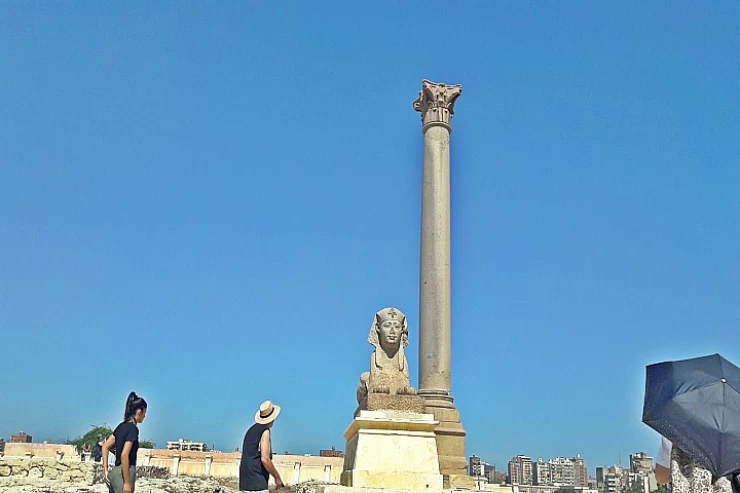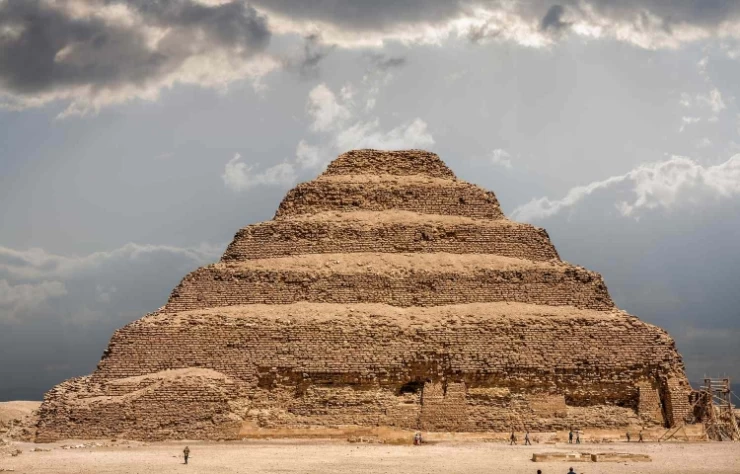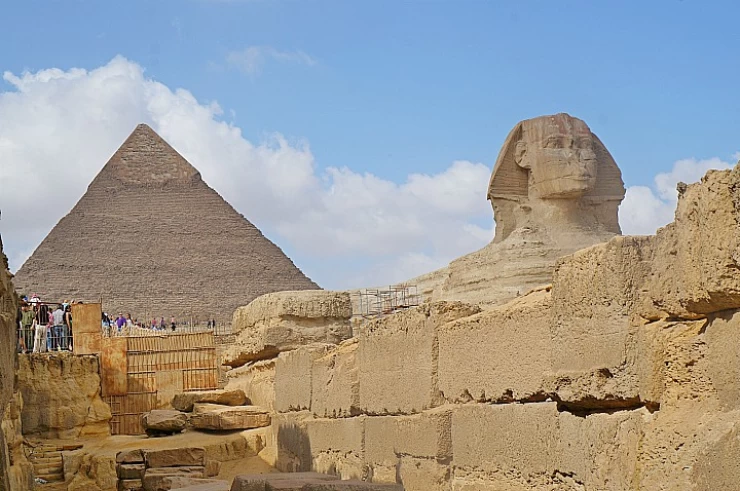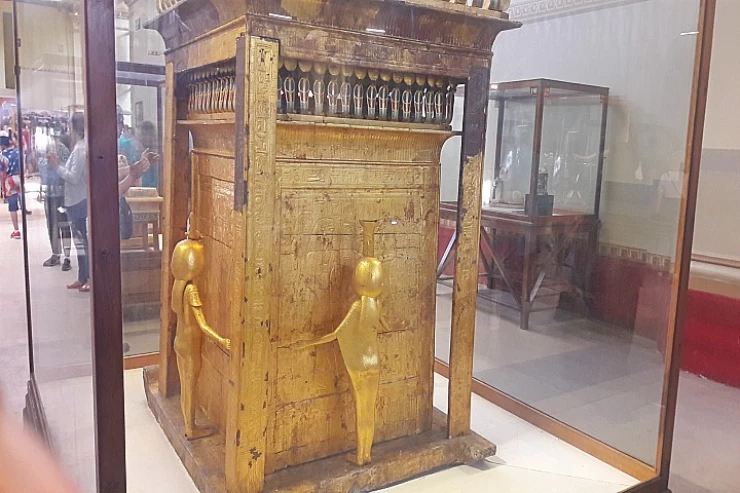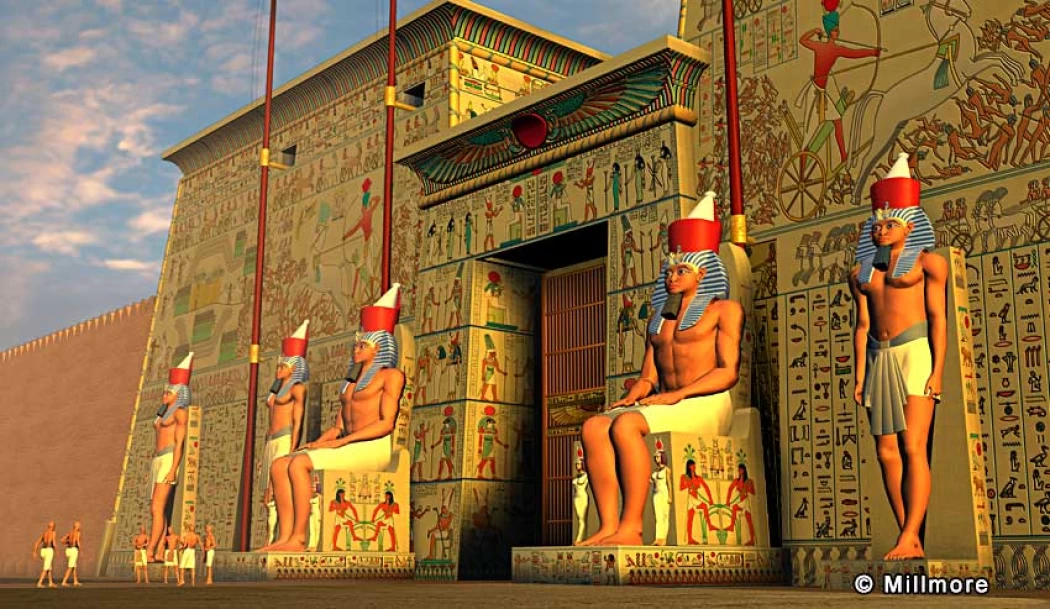
Egyptian temples architecture
Egyptian temples architecture
Egyptian temples were established in ancient Egypt and areas under Egyptian rule for the official worship of deities and commemorations of the pharaohs here, We might suggest that temples were often constructed for the worship of kings.
Three important elements based on ancient Egyptian worship: making sacrifices to the gods, celebrating religious festivals, and combating the powers of chaos. In order to continue adhering to Maat, the divine order of the universe, the ancient Egyptian deities made these rituals appropriate.
The pharaohs were responsible for dwelling and caring for the gods, who devoted enormous resources to the construction and maintenance of the temple. For reasons of necessity, the pharaohs delegated most of their ritual duties to a group of priests.
Most of the residents were excluded from direct participation in the rituals and were forbidden from entering the holiest areas of the temple. However, the temple was an important religious site for all Egyptians, who went there to pray, make offerings, and seek guidance from the abode of the gods within.
Ancient Egyptian worship focused on three important elements: making sacrifices to the gods, celebrating religious festivals, and overcoming the forces of chaos. . These rituals were deemed necessary for the ancient Egyptian deities in order to continue adhering to Maat, the divine order of the universe.
The dwellings and care of the gods were the duties of the pharaohs, who devoted enormous resources to the construction and maintenance of the temple. For reasons of necessity, the pharaohs delegated most of their ritual duties to a group of priests.
Most of the residents were excluded from direct participation in the rituals and were forbidden from entering the holiest areas of the temple. However, the temple was an important religious site for all Egyptians, who went there to pray, make offerings, and seek guidance from the abode of the gods within.
The most sacred part of the temple was the sanctuary, which usually contained a cult image and a statueTemples continued in Egypt despite the nation's decline and eventual loss of independence during the Roman Empire in 30 BC. A variety of architectural designs of temples can be added to Egypt luxury tours to impress your eyes with the unique Egyptian Pharaohs' architecture.
With the advent of Christianity, the traditional Egyptian religion faced increasing neglect, and the temple communities disappeared during the fourth and sixth centuries. The buildings they left behind have suffered centuries of destruction and neglect.
Here, we are listing a number of ancient Egyptian temples. We've ordered them according to their location starting in the south of the country to the north: Temples of Abu Simbel, Kalabsha temple, Elephants of temples, Kom Ombo temple, Edfu Temple, Abydos temple complex, Hatshepsut Temple, Karnak Temple, Luxor temple, Dendera Temple, Temple of Medinet Habu.
And now we will talk about the most famous temples in Egypt1-Karnak Temple
The Karnak Temple is located to the west of Thebes, about three kilometers north of the Luxor temple is the largest and most important Egyptian temple. The ancient Egyptians called it "Ibt Sot," which means "the chosen spot for the thrones of Amun.
" Where he was dedicated to the worship of the god Amun, head of the holy trinity of Thebes with Mut and Khonsu. It consists of a group of temples and architectural elements that were built by the kings of ancient Egypt from the Middle Kingdom to the Ptolemaic era. Recently discovered Ptolemaic and Roman baths in front of the first pylon.
Karnak includes the temple of the goddess Mut, which can be reached through the eastern rams' road from the tenth pylon of the Karnak temple, and is surrounded on the east, south, and west by the Holy Lake.
The temple was dedicated to the goddess Mut, the wife of Amun-Ra and the mother of the god Khonsu, and it was built by Amenhotep III the kings added several additions to it until the Ptolemaic era.
The temple includes within its walls two small temples; The first was dedicated to the god Khonsu and dates back to the eighteenth dynasty, while the second was dedicated to the worship of the god Amun and dates back to the era of Ramses III.
The temple begins with an edifice, then a courtyard with several statues of the goddess "Sekhmet", which is depicted in the form of a lady with the head of a lioness, which is an image of the goddess Mut. Then we reach another courtyard with columns, then the hall of the masters, followed by the Holy of Holies.
2-Abu Simbel temple
It is located on the west bank of Lake Nasser, 290 km southwest of AswanThey date from the temple of Abu Simbel in the era of King Ramses II (1279-1212 BC). They pitted a high sandstone plateau 4 km south of their current location, to which they were moved in the campaign to save the monuments of Nubia after the establishment of the High Dam in 1960 AD.
The Abu Simbel site includes two temples, namely, the Great Temple of Abu Simbel, which was dedicated to the worship of “Ra Hur Akti” and “Amun Ra” Ptah and the king himself, and the small temple of Abu Simbel, which is located 100 meters from the first temple that was dedicated to the goddess Hathor and Queen Nefertari, the principal wife of the king.
The name “Abu Simbel” was given to this site by the Swiss traveler “Johann Ludwig Burckhardt” known as “Ibrahim Burckhardt” who discovered the site in 1813 AD when a child named “Abu Simbel” took him to him.
The importance of the Great Temple of Abu Simbel is due to its association with the phenomenon of the sun crossing the face of the statue of Pharaoh Ramses II twice a year. The first corresponds to his birthday, corresponding to October 22, and the second, on February 22, to commemorate his coronation.
The temple also features a unique architectural design; Where its façade is clicked in the rock, and it is decorated with four huge statues of King Ramses II, each of which reaches about 20 m in length, and next to the façade is a corridor leading to the interior of the temple, which pecked into the rock at a depth of 48 m and its walls are decorated with scenes recording the king’s victories and conquests, including the Battle of Kadesh in which he won the Hittites. , In addition to religious scenes depicting the king in his relations with Egyptian deities.
As for the small temple of Abu Simbel, King Ramses II gifted it to Queen Nefertari, his main wife, and his lover, and its façade is adorned with six huge statues of equal size representing the king and the queen in a clear demonstration of the high status that the queen enjoyed with her husband, and the temple extends into the phone teau at a depth of 24 m, and its interior walls decorate a group Among the wonderful scenes depicting the queen worshiping the different deities, either with the king or alone.







